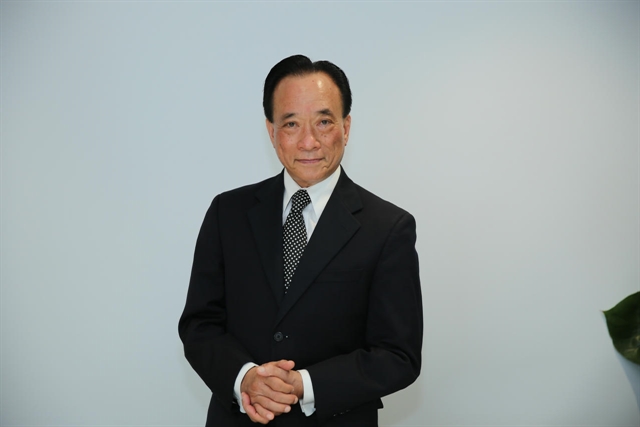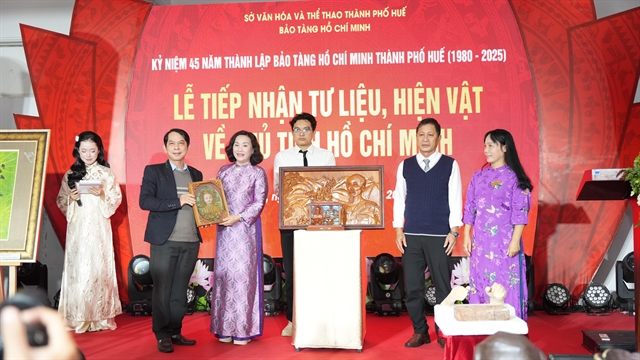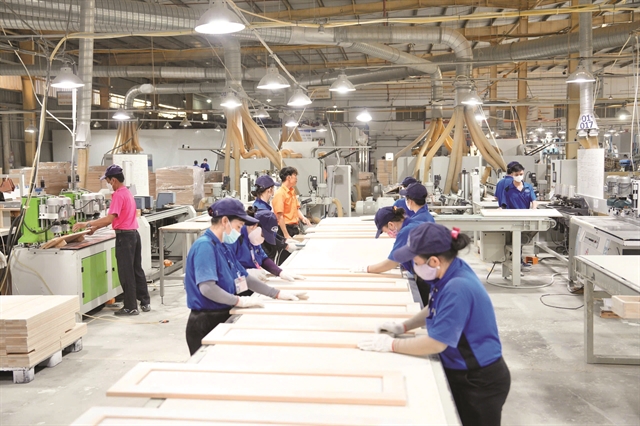 Society
Society

Prime Minister Phạm Minh Chính recently highlighted technology as a spearhead in the country’s strategy to combat COVID-19.

|
| The Bluezone application is playing an important role in tracing COVID-19 patients. — VNA/VNS Photo Minh Quyết |
HÀ NỘI — Prime Minister Phạm Minh Chính recently highlighted technology as a spearhead in the country’s strategy to combat COVID-19.
The contribution of technology during the pandemic to prepare for recovery, reconstruction and socio-economic development is very important.
In many countries around the world, technology played an important role in re-establishing lives and economic recovery as the pandemic was brought under control.
In Việt Nam, applications in medical declaration, robots and testing are promoting the power of science and technology in effective pandemic prevention and control.
Deputy Minister of Science and Technology Bùi Thế Duy, who is also the head of the Quick Response Information Team under the National Steering Committee for COVID-19 Prevention and Control, said that the quick response information team always updated, analysed and used monitoring information and data to assess the situation and make forecasts about pandemic developments in the world and in Việt Nam.
The team also established a mechanism to monitor those on entry and in quarantine, develop response plans, build a COVID-19 safety map, and provide advice to emergency services, as well as implementing measures to help localities with the pandemic in the area.
Regarding the application of artificial intelligence (AI) in COVID-19 prevention and control, a group of scientists from the Faculty of Medicine under the HCM City National University has just announced a new study, in which AI is used to manage people in quarantine areas, hospitals, industrial parks, border gates, and crowded areas to prevent COVID-19.
The solution introduces a control system capable of detecting people who have been in close contact with COVID-19 patients who are required to be quarantined.
The monitoring system is deployed at apartment entryways, hospital gates, doors to office buildings, quarantine areas and amusement parks.
This system helps identify faces and checks the temperatures of many people at the same time.
Associate professor Phạm Xuân Đà, representative of the research team, said the system was very beneficial if the country had a policy of quarantining F1 contacts at home.
The number of contacts can be very high, so the quarantine centres will be a burden for the localities, from the arrangement of medical facilities to service personnel.
Therefore, the application of technology and AI was a good solution in Việt Nam, said Đà.
The people in the F1 and F2 categories will be entered into the system, including names, phone numbers and quarantine status.
If they go through the monitoring system, a warning is issued to firstly notify those people that they have violated the quarantine regulations, then simultaneously notify those responsible for quarantine management.
This data is also directly connected to automated reporting software to reduce human intervention.
According to the research team, this system also helps to detect high-risk cases that are not under surveillance but show signs of fever.
In addition, the application will present statistics every hour about temperature measurements of people in the area, which is the basis for determining the risk of people infected with COVID-19.
In particular, in quarantine areas, this system will minimise direct contact between medical staff and quarantined people thanks to the automatic temperature measurement feature, which is an effective solution in terms of saving time, manpower and costs.
BKAV Group – an enterprise operating in the fields of cybersecurity and software – has developed the Bluezone application, which is playing an important role in tracing COVID-19 patients.
Businesses with extensive experience in turning research results into commercial products in the spirit of "fighting the pandemic like fighting the enemy" have worked on many scientific and technological products and projects such as diagnostic kits and vaccine research.
The medical robot system in quarantine areas has been put into operation to replace medical workers to transport food, medicine, necessities, and garbage collection. They serve patients and can especially support visits and examination, minimising contact between people. — VNS




